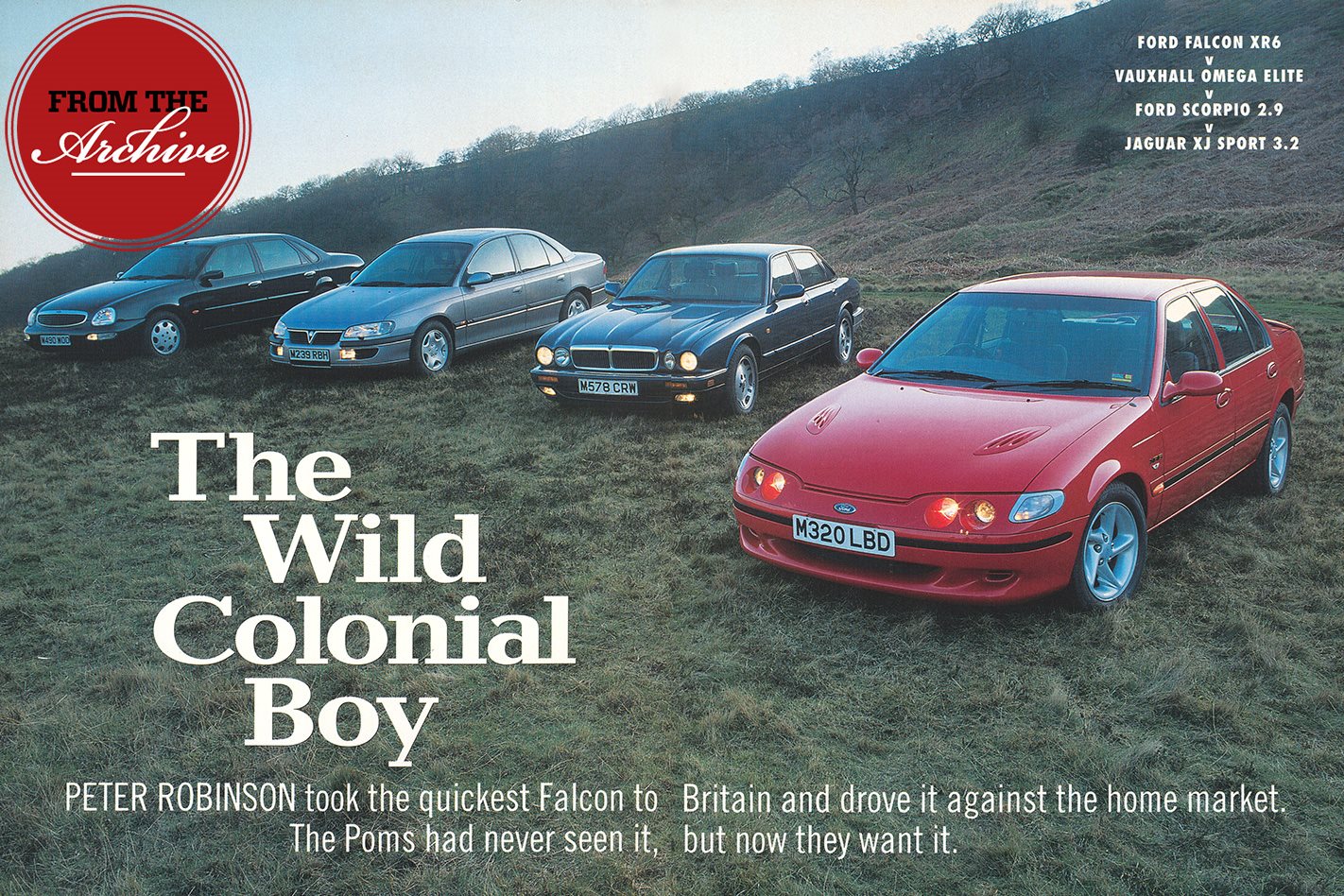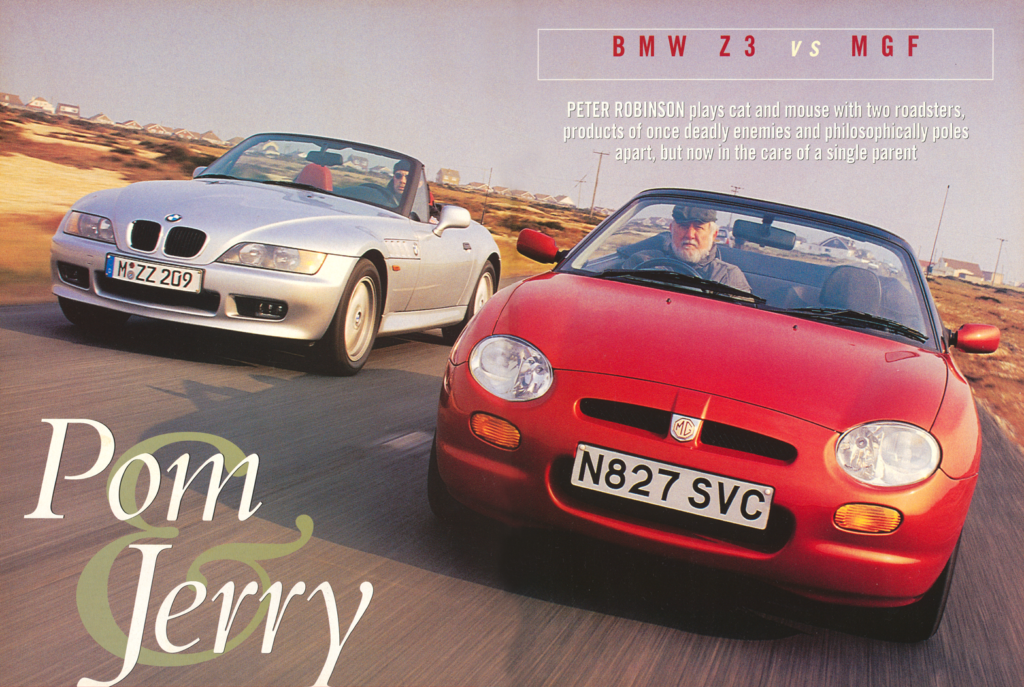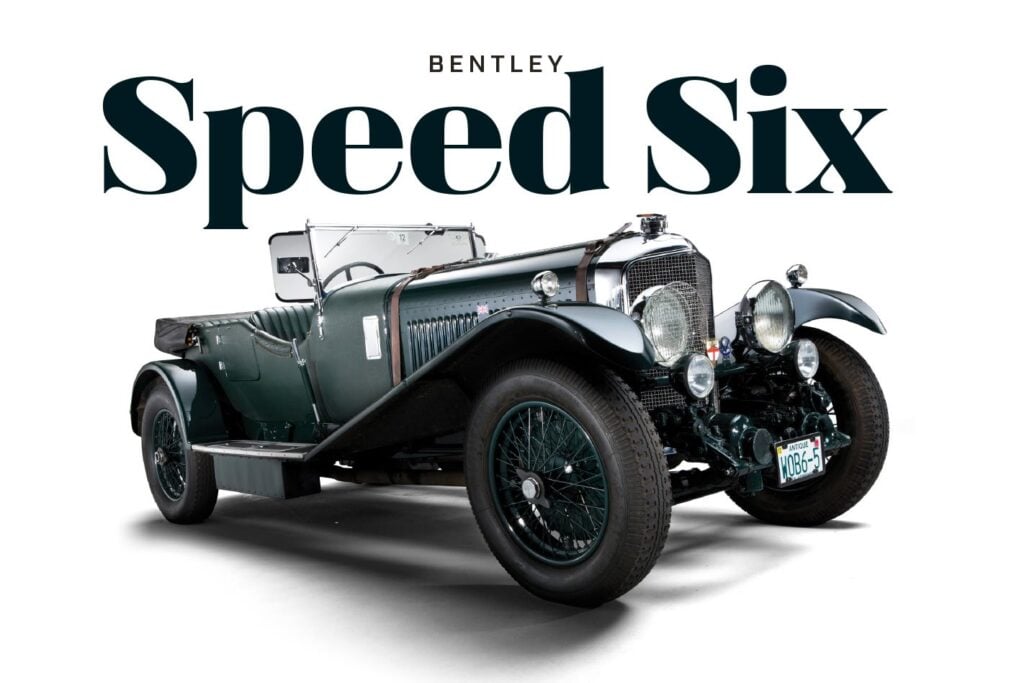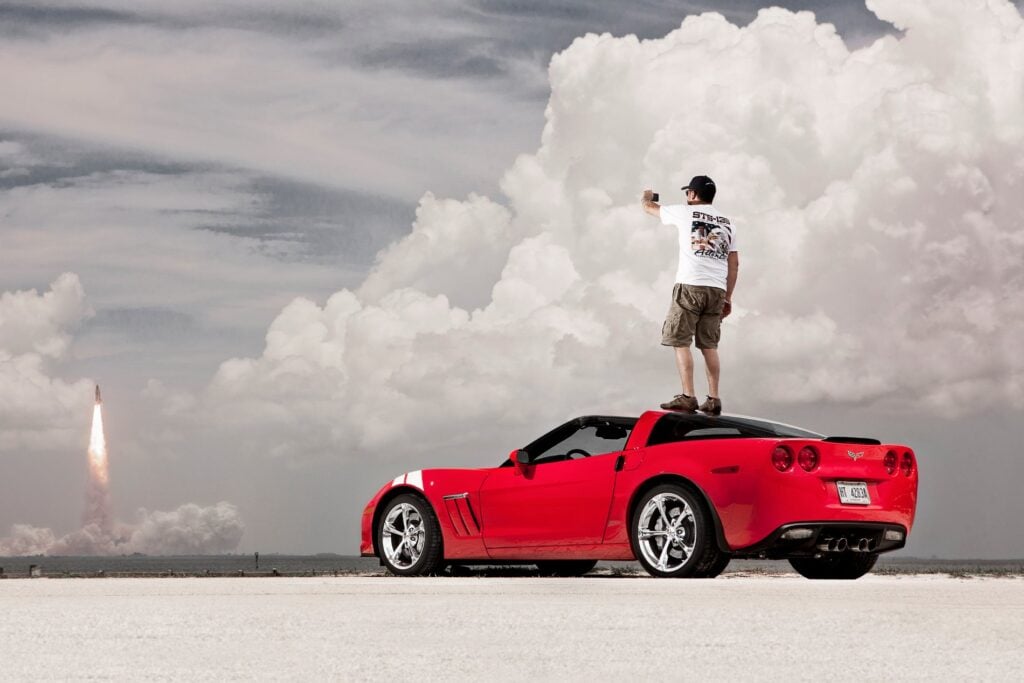Peter Robinson took the quickest Falcon to Britain and drove it against the home market. The Poims had never seen it, but now they want it.
The two lads hurried across Helmsley’s Market Place, trying not to spill their pints. They could hear a crisp, snarling exhaust note and didn’t want to miss whatever was making it. So they tottered out of the Feathers Hotel just in time to see a crimson, four-eyed snout appear, followed by the longest, widest body they’d ever seen on a Ford.
First published in the July 1995 issue of Wheels magazine, Australia’s most experienced and most trusted car magazine since 1953.
They took in the big five-spoke alloys and the winged tail, and noted the XR6 badge. In Britain, XR on a Ford means Serious Perfomance. Yet only the blue oval trademark was familiar. The rest – alien, angry and unsubtle- was a mystery.
“What kind of Ford is that, then?” asked the taller Yorkshireman, unable to stop gawking. “I’ve never seen one before and I work for the local Ford dealer. Is it some special Mondeo, then?”
“We heard it before we saw it,” said his mate, “Doesn’t it sound great?”
When it became clear they didn’t have a clue, we let them in on the secret. “Australian? You’re kidding! Why can’t we buy a Ford like this, then?”
Their questions were repeated wherever the Falcon went in Britain. Nobody, but nobody, knew this Ford’s pedigree. All were surprised to learn it was Australian. “You mean Ford design and builds cars in Australia?” they said, as if the Colonials still drove Austin Freeways and Triumph Dolomites.
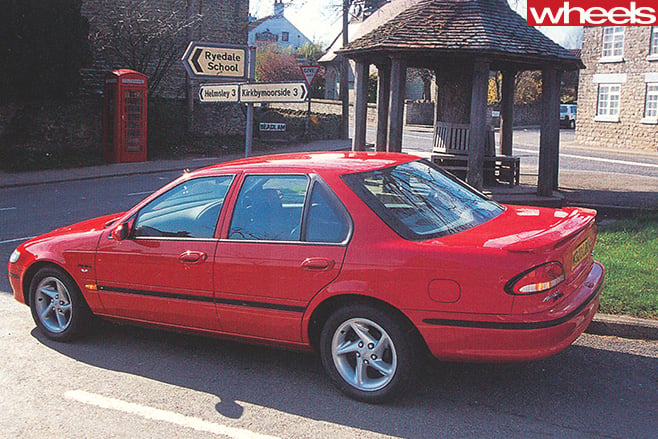
The Falcon they couldn’t understand. Tell them it’s often Australia’s best-selling model (and therefore comparable in one sense with a puny $11,995 1.6-litre midrange Escort LX), that it’s priced from only £12,475, and bigger and faster than a Scorpio, and they want to know why.
They want to know why Australians can buy so much car for so little money. Why the base engine is a “wow, that’s big” 4.0 litre straight six. Why the standard Falcon engine delivers 210hp, and why petrol is half price in Australia. We quickly learned. No Ferrari could hope to match the interest created by an unknown Ford sporting XR badges, wearing legitimate British registration and bearing no prototype disguise.
From the moment Mr Editor MacKenzie discovered that Tickford engineer David Morgan planned to use a Ford Falcon XR6 as his company car, a Euro-comparison involving the Falcon was a foregone conclusion.
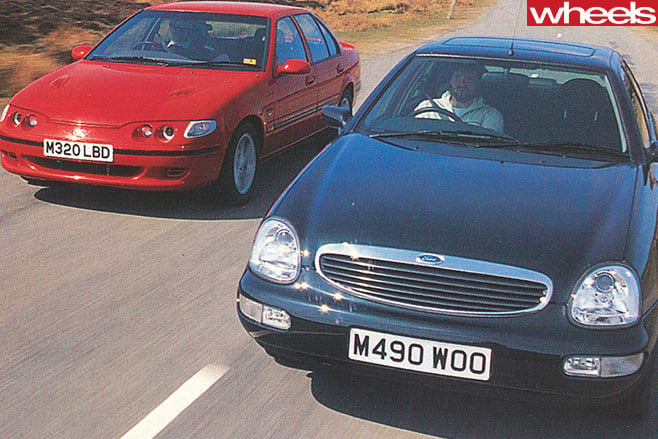
What European rivals? Searching through British new car price lists, it soon became apparent that the XR6 – or any Falcon – offers an unmatched performance/size/dollar, (or pound, since we’re in Britain) relationship.
Ideally, we wanted cars of a similar size, performance and comparable price with a parallel technical layout: front engine/rear drive. And since it was the five-speed XR6, they needed a sporting bias.
Trouble is, neither Ford nor Vauxhall (GM) offer quite such a combination. They did, but the new generation models the new Omega was launched in early 1994 and the facelifted Scorpio late in the year – confom to growing customer preferences in this class and exclude overtly sporting sedans, preferring instead to push a luxury image in their quest to take on BMW and Mercedes-Benz.
Vauxhall lists a manual transmission as a no cost option for GM’s new 24 valve 3.0 litre V6, yet neither GM’s British nor German operations were able to supply us with a test car. Lack of customer and press demand, apparently. Ford doesn’t even bother to offer a manual version of its Cosworth-tweaked 24 valve 2.9 litre V6 in the Scorpio. There were other reasons to make the Omega and Scorpio’s inclusion mandatory, however, even as automatics.
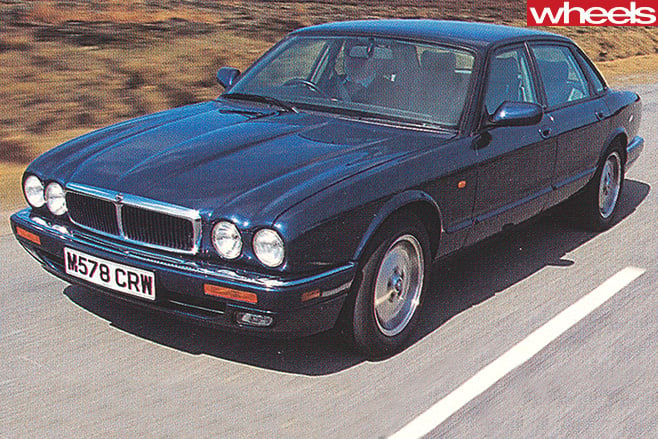
The Scorpio, as Europe’s big Ford, presents a significant cultural dilemma for FoMoCo. Eventually, if Ford is true to its plan to standardise the platfoms of models of a similar size around the world, the Scorpio and Falcon must be replaced by the same car. At least, under the skin.
Comparing Scorpio with the true-blue Falcon righty provided the perfect opportunity to understand what led Ford Australia to reject the European model when it came to choosing a new Falcon for 1988. The Falcon and Scorpio driven here represent the latest versions of models launched in the mid-’80s and heavily facelifted (only the doors are carried over) along similar lines last year with the aim of extending their model cycles while Detroit makes up its mind about the future of both.
One of the alternatives under serious consideration by Ford is to drop the Scorpio altogether and use a new Jaguar – remember the cat is now wholly owned by Ford – to take on the European establishment. A fancy Ford, like equivalent Vauxhalls, has never commanded the same magnetism as its German rivals and Ford sees this as very much Jaguar’s future task.
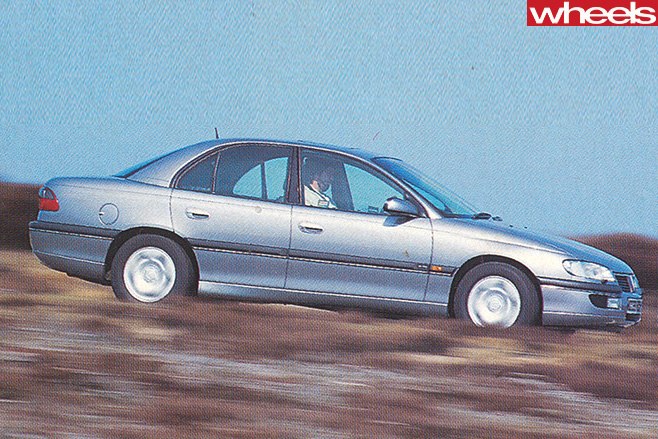
Why no BMW or Mercedes? Easy, there are totally new Mercedes-Benz E class and 5 Series models just months from launch. Four cars, then. Two Fords from opposite ends of the world, a Jaguar and a Vauxhall.
Design? The Omega, polished in typical GM fashion, is contemporary and rounded, handsome rather than beautiful and certainly unlikely to offend potential buyers. Which is more than can be said for the European Ford. It’s hard to understand how the Scorpio wriggled through the checks and balances of Ford’s design system. The compromises of the narrow Sierra platfom are obvious: that bulbous nose and fat, cumbersome tail are quite alienated from a glasshouse that remains essentially unaltered. The Scorpio looks as if one designer took the front, another the rear and the two parts were connected to the centre without reference to the whole. It’s not even particularly slippery, having a drag coefficient of 0.33. People certainly notice what Ford calls ”distinctive” stying, and talk about it, but that doesn’t necessarily mean they’re going to turn into customers.
The Falcon’s facelift is far more predictable and successful. Only the retention of the side body crease lines through the carry-over doors dates the car. The Jaguar is, well, a Jaguar. More Jaguar like than the previous model since the revival of traditional design cues that give the car a more graceful appearance but a Cd figure of only 0.37.
All four are front engine/rear-drive, but have clear engineering distinctions that begin with the engines. While Ford Australia sticks with an in-line six, Europe seems intent on switching to vees. Ford and GM are already converts, Jaguar and Mercedes-Benz are soon to follow, leaving only BMW and Volvo as adherents.
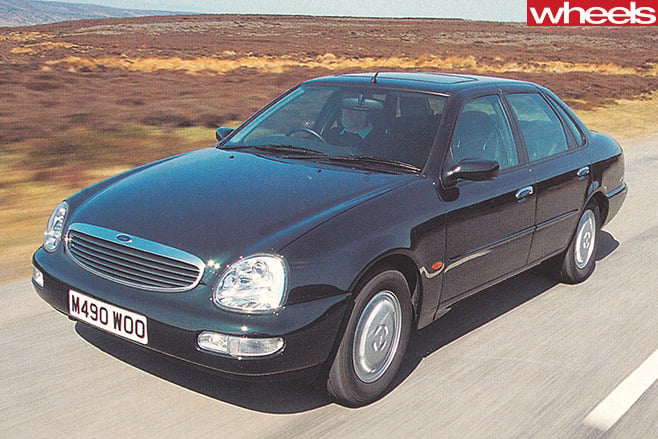
By Australian standards, it’s a brilliant high-revving topend performer, yet almost lethargic at low revs and lacking the grunt of instant engine response from idle that you take for granted from a Commodore or Falcon. Peak torque of270 Nm is developed at a high 3600 rpm and not even a torque converter and super smooth auto tranny can disguise the need to kickdown for maximum acceleration. From 3000 rpm to the 6750 rpm redline this engine spins effortlessly and powerfully. The refinement is obvious and no Ford or, as it turned out, Jaguar six is going to equal its finesse.
Ford’s ageing 2. 9 litre Cologne V6 benefits enormously from the Cosworth development that brought twin overhead camshafts and four valves per cylinder a couple of years ago and in its latest form gets a variable-length induction tract. Even so, the Scorpio’s 152 kW can’t quite match the Vauxhall’s 155 kW and it, too, has a peaky torque curve developing 281 Nm at a lofty 4200 rpm. But Ford’s A4LDE fourspeed automatic doesn’t shift as fluently or quickly as GM’s tranny, while coming on and off the power quickly induces a mild jerk that also spoils the Jaguar’s driveline refinement.
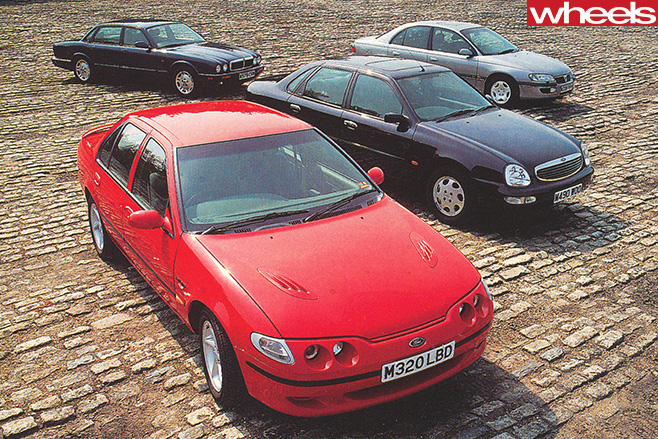
Despite the advances of a single overhead camshaft and modem electronic multipoint fuel injection system, the Aussie Ford’s basic engine dates back to the original 1960 144 cu in compact Falcon. Yes, 35 years later and the bore centres are the same. But the ancient long-stroke six has enough additional capacity, even over the Jaguar, to give it a small edge in power and a massive advantage in torque.
Combine the least weight with 366 Nm developed at a humble 3150rpm and a manual gearbox, and it’s easy to see why the Falcon’s quickest here.
Few Europeans have firsthand experience of such an engine. A lowly 5500 rpm redline and all that torque should demonstrate that this engine has an aversion to high revs. The fact is, the Xlt6 seldom needs more than 3500 rpm, is remarkably responsive from 1000 rpm even in the tall fifth gear, and in fourth feels strong enough to climb a mountain. Push it and, despite that stiffer 12 counterweight crankshaft, the engine strains and grows harsh above 4500 rpm
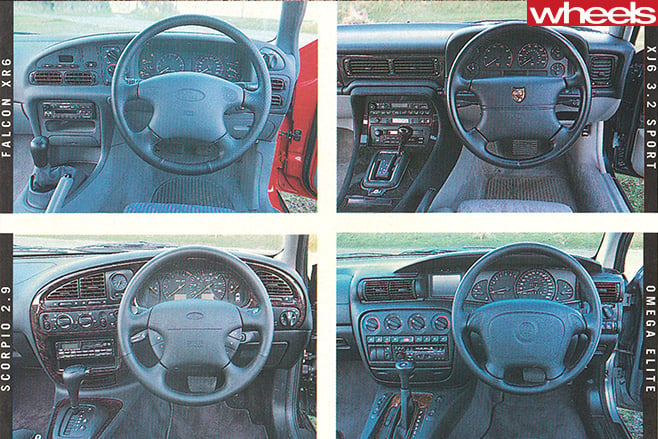
The Borg-Warner T5 gearbox still drones on the overrun just as the cliff still whines but, believe me, after years of driving relatively small, high-revving European engines, there’s a hell of lot to be said for a big, lazy six and a flat torque curve that requires only tiny throttle openings. There obviously isn’t the same need to change gears, yet the Falcon’s shift is light, quick and precise, the huge gap between fourth and fifth serving merely to emphasis the engine’s pull.
The paradox of the Falcon comes through a chassis set-up that’s more overtly sporting, even, than Jaguar’s so-called XJ6 Sport. Both rely on firmer springs and dampers. Bigger anti-roll bars and fatter tyres – those on the XR6 we drove are admittedly the optional 225/50 16s- than the standard equipment.
Yet, in spite of its comparatively low-tech engine, the Falcon is easily the most sporting sedan in this group. It’s as if, outside the mega-dollar M5 BMW, the AMG Meres and Volvo’s front-drive T5, Europe has given up building large, four-door sedans for people who want an aggressive chassis and gusty performance at an affordable price.
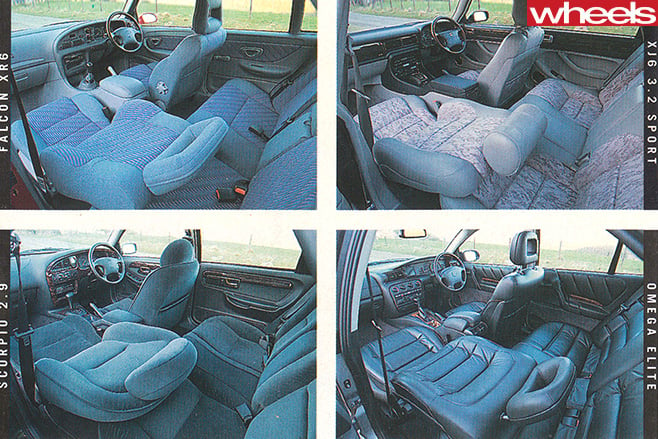
But the Falcon is the only car here to cling to a live rear axle; occasionally the tricky undulations of the lumpy moor roads catch the rear end out so that it skips sideways or spins the inside rear wheel out of a hairpin. Yet the ride is never uncomfortable and the suspension feels bullet-proof tough, with travel enough to absorb bumps that cause the Jaguar to bottom out.
Up to eight-tenths, the XJ6 Sport feels to have the handling/ride compromise perfectly sorted. The steering offers more weight and feel than the Sovereign and seems more direct – though the 2.8 turns lock to lock needs to be seen in the light of a huge 12.1m turning circle. While the body stays flat, the ride is still supple enough to suppress bumps, and the handling seems neutral. Push beyond this and, just where the Falcon welcomes the change, the Jaguar’s weight becomes becomes apparent; the body begins to float and heave, understeer intrudes and steering demands more lock.
Neither the Omega nor the Scorpio have sporting pretensions, yet so well developed are their respective suspensions that both are far more capable than their images suggest. Ultimately, it’s the more firmly sprung Omega that is closest to rivalling the Falcon’s driving appeal. The Scorpio lacks the body control and, unlike the Falcon, never manages to hide its bulk. When it runs out of grip, the Euro-Ford behaves predictably and, while the Servotronic power steering is quick enough to make the car wonderfully manoeuvrable at low speeds, it can become nervous in crosswinds.
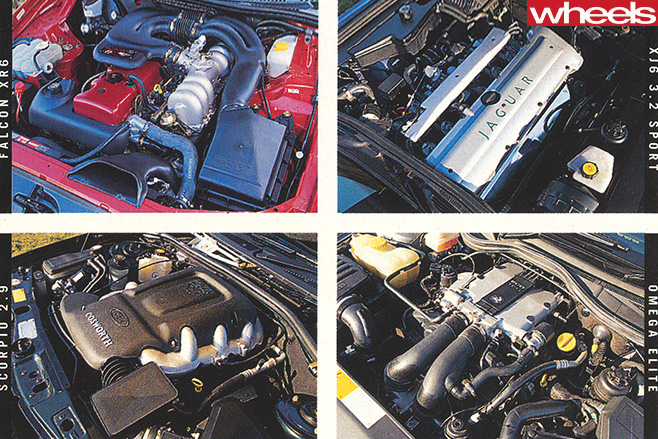
As motorway transport the refinement of the Europeans becomes obvious, yet the Falcon remains a contender, not least because it is easily the highest geared. Still, there is a constant if mild tremor through the wheel and more road and wind noise than the others produce. All four have excellent brakes, but it’s the Falcon’s progressive and instantly responsive pedal action that we preferred.
Cabin space is a joke in the Jaguar and the rear seat a nonsense in terms of comfort, visibility and roominess. Yet the driver who enjoys being cossetted will love the club atmosphere of its interior and ignore the pleas from tall rear seat passengers. The Omega is spoiled for the driver by a non-adjustable steering wheel, though it is otherwise superbly equipped and comfortable for four adults. Likewise the Scorpio, at least if you like mock wood interiors.
The Falcon is far less pretentious. The driving position is a vast improvement over previous Falcons don’t reach and rake steering wheel adjustment and a console-mounted handbrake make a difference to your perception of a car’s driving affinity? – and it’s still the only car capable of carrying five large adults in any comfort.
The interior, which is light and airy, occasionally betrays its age in not having adjustable seatbelt anchorage points.
Subtle it’s not, but there’s no denying the XR6 is astonishingly effective. Those who drove , the Falcon greatly enjoyed the experience. Neither American nor European, Ford’s Australian car has evolved into something quite unique. Uncomplicated and simple it may be, but it’s never raw and the honesty of its character shines through.
Yes, Europeans expect a sedan of this size to be more civilized, but in creating greater refinement some of the driving ease and pleasure, and certainly the ruggedness, has undoubtedly been lost.

